Ancient Arts
Morocco - Part Three
After breakfast in the Riad we returned to the medina. Today we visited the weaving shops and learned about the symbols and craftsmanship of traditional Moroccan rugs.
All inclusive Riad breakfast: juice, coffee/tea, yogurt, soft cheese, eggs, French bread, msemmen (Moroccan breakfast bread) served with butter and honey or with olives and herbs, and beghrir (semolina pancakes) served with jam.
Weaving techniques vary across tribes, regions, and villages. Amazigh (Berber) women, for example, have been hand-weaving textiles since 600 B.C., passing the craft from generation to generation. Each step of the process is imbued with meaning and variations are reflected throughout every aspect — the animals the fibers are harvested from, the dye ingredients, to the final design of the weave.
Since the weaving craft is taught by elders, the style of each tribe or region often reflects the climate and customs of that particular community. Artisans in the snowy Atlas Mountains specialize in thicker rugs than the artisans who reside in the desert.
As a fiber fanatic, I found the colors and patterns quite mind blowing. We felt the density of the fibers in each rug as well as the softness and plushness under foot. I was especially taken by a fiber I’d never heard of before — cactus silk, otherwise known as Sabra Silk. Made from fibers from the Agave Cacti or Saharan Aloe Vera, both can be found in the Sahara Desert in northern Morocco.
The process of creating this strong and sustainable fabric involves: crushing and then soaking the leaves, separating and twisting the thin fibers by hand and then coloring the strands with vegetable dyes. Once the material has been dyed and dried it is then hand woven on looms. This very timely process creates a beautiful, durable and vibrantly colored material.

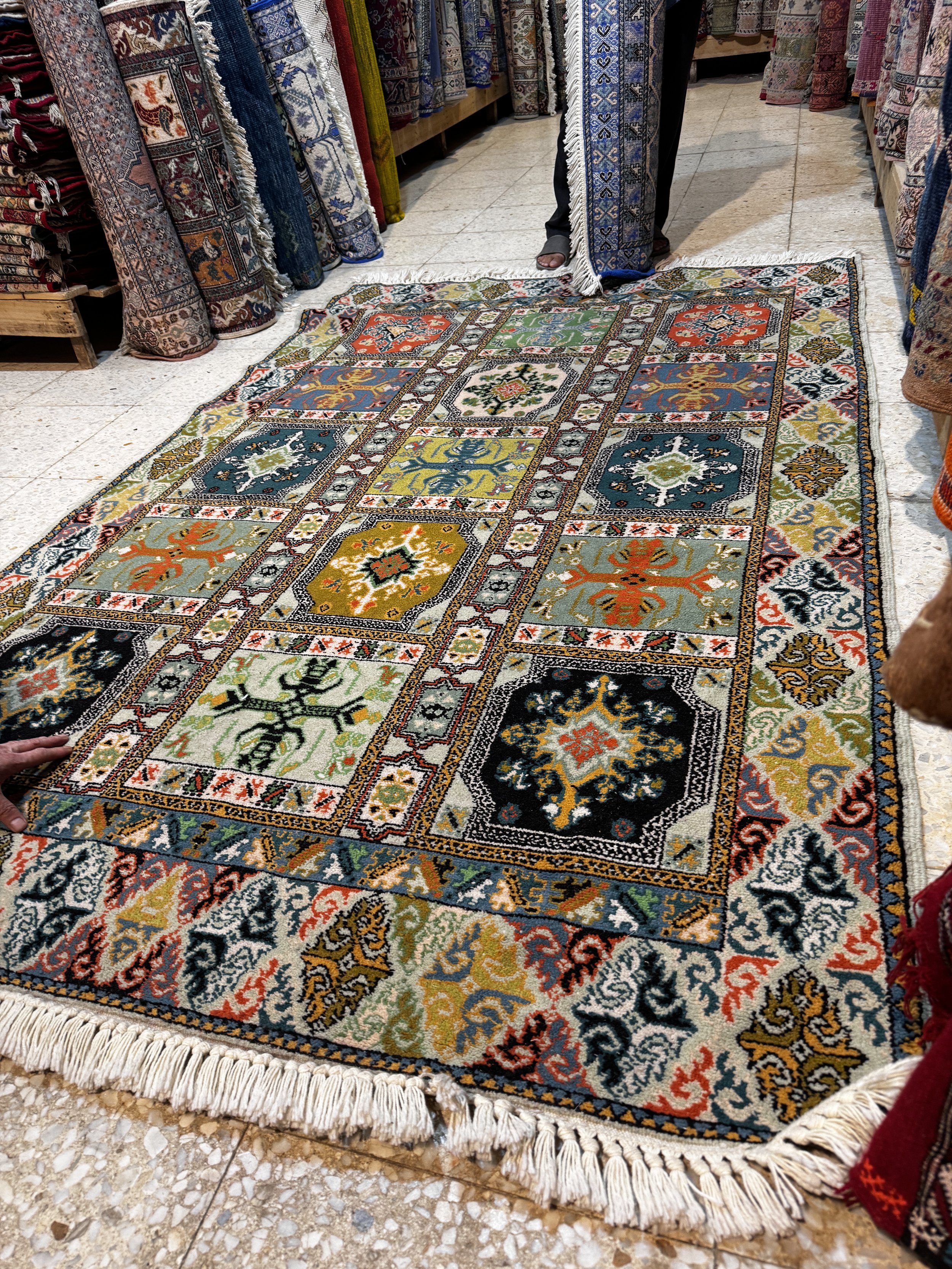
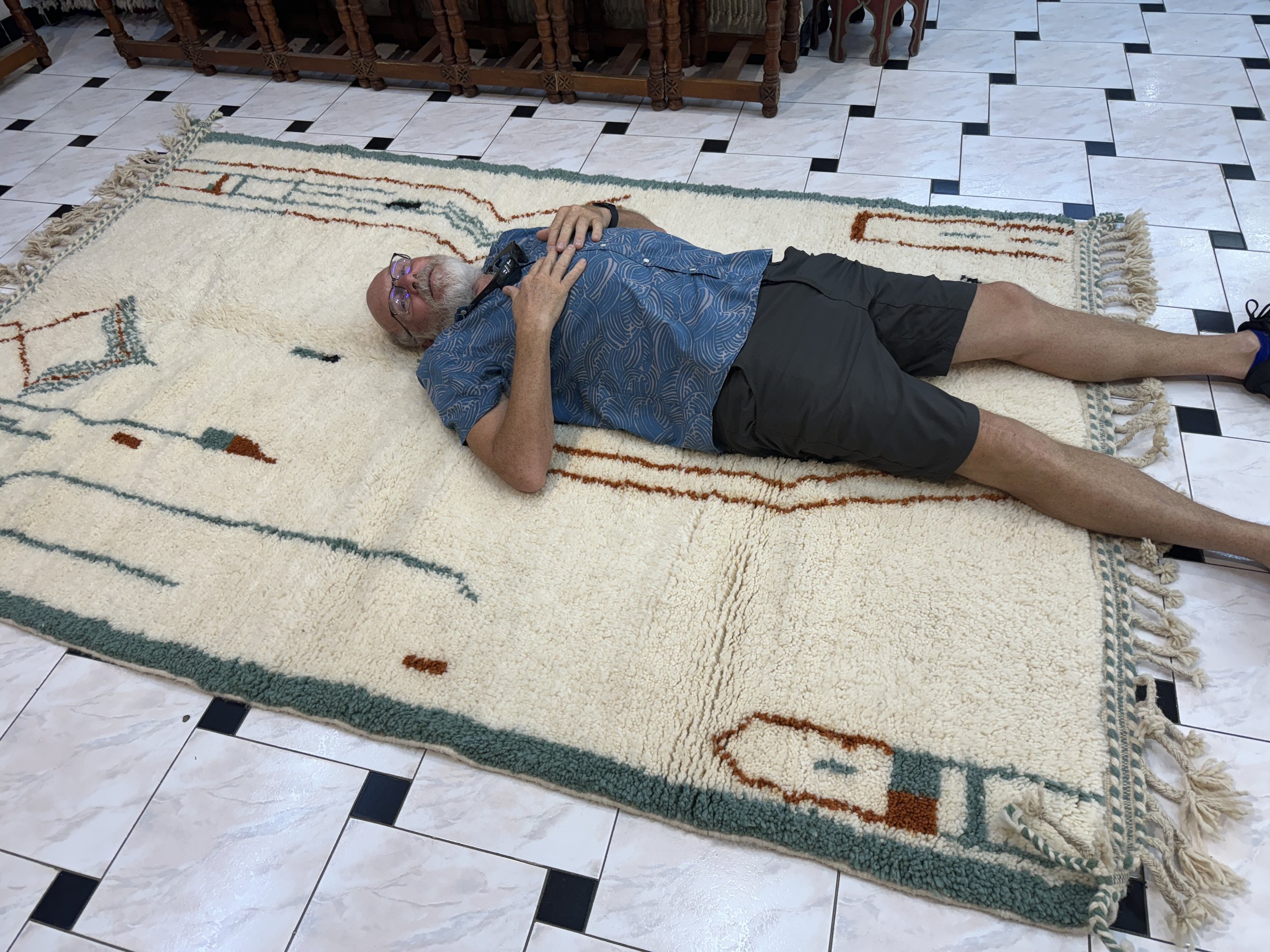




Creating a silk rug on a floor loom.
My continuing fascination with tile-work and mosaics was further heightened when we left the weaving shop to learn about this traditional industry. Ceramics is another important part of Moroccan culture, a traditional craft that dates back millennia and is influenced by Berber, Arab, and Andalusian civilizations. One of the two main centers for ceramics is in Fez where local artists produce world-famous pottery and mosaics, recognizable by their bright colors and intricate designs. We took a guided tour of the pottery and mosaic workshops and saw the artisans creating their amazing products.
The clay used to make the pottery comes from the hills around Fez. It is a very fine texture and is predominantly grey in color (as opposed to the terracotta tones found further south). As it dries, the natural grey of the clay lightens making it the perfect blank canvas. The time honored process starts by first soaking the clay in water for about a week to soften it. It is then kneaded first by foot and then by hand to achieve the required texture.
Once it is soft enough, it is shaped on a foot wheel, before it is set outside in the sun to dry. The pieces are then fired in a traditional mud kiln fueled by ground olive pits, an economical and ecologically-friendly fuel source that is a by-product from the olive oil industry. It burns extremely hot yet very clean. Each ceramic masterpiece is then hand painted or stenciled with intricate designs and colors, the potter signs his name along with the word Fès or Fas or Fez or the Arabic: فاس to denote its quality. It is then kiln fired one final time.



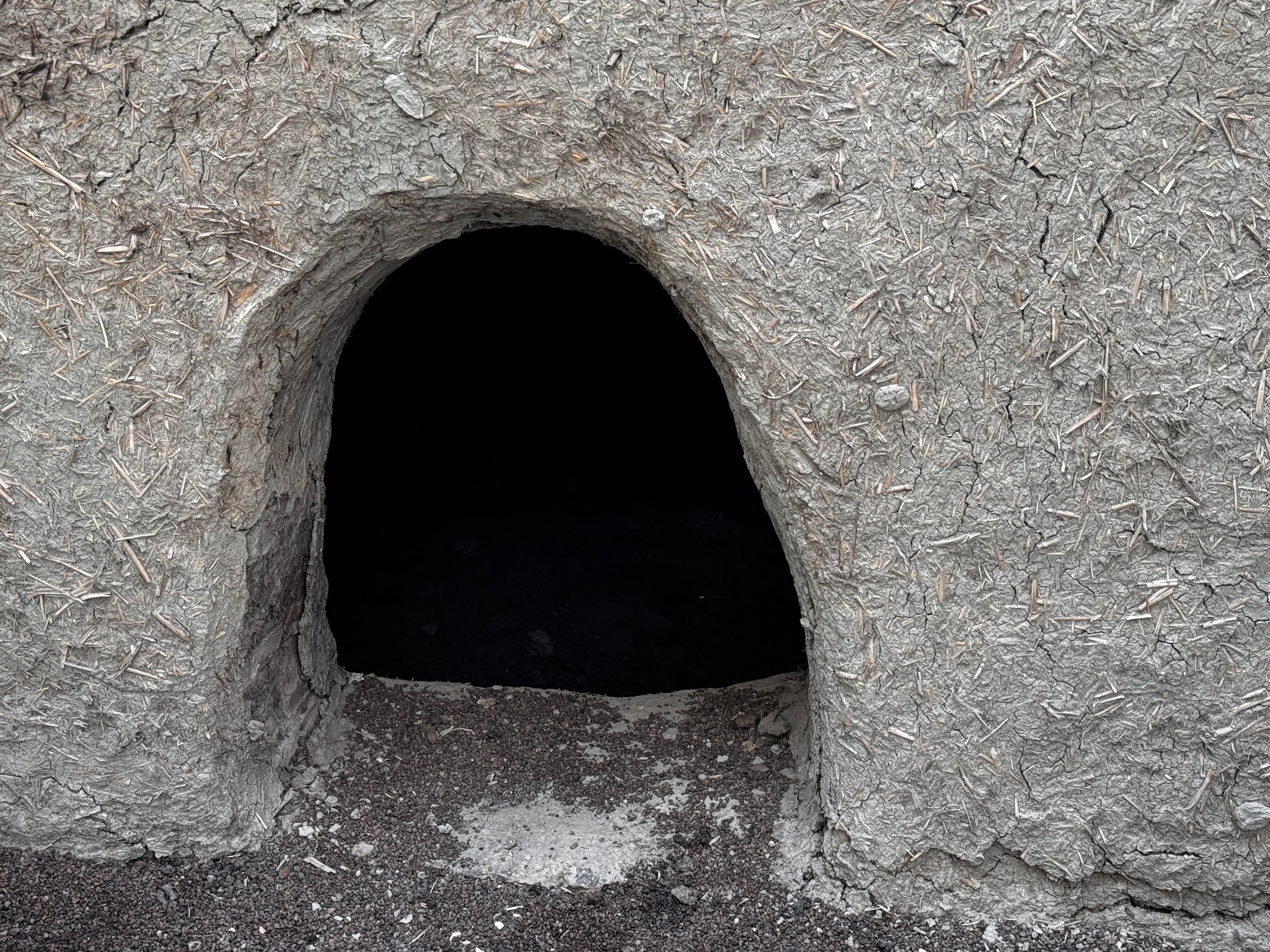




Some of the pieces were trimmed with tooled silver overlay which gives an elaborate richness to the design and adds to its uniqueness.



The craftsmanship behind the ancient Moroccan mosaic art known as Zellij is nothing short of astonishing. Four inch square tiles are fired and glazed in solid colors. The squares are stacked beside a cutter and are trimmed by hand into smaller geometric shapes according to their color and the desired pattern. The shapes in each design is drawn freehand directly onto the tiles, the patterns are tessellated precisely to insure the efficient use of each tile. The tool used to cut the shapes resembles a big, two-sided hammer, with both ends having a sharp edge.



Once the shapes are cut, the pieces are transferred to the finisher. The mosaics are then assembled on the ground on a paper pattern UPSIDE DOWN! Each shape and color are put into place without actually seeing the pattern emerge - like a blind puzzle. They are then covered with plaster or mortar so that they become a single unit. The entire piece is eventually flipped right side up and the colorful face is revealed. We were told that, fortunately, it IS possible to replace a piece if the wrong color was accidentally inserted.



In the shop at the end of the tour we were overwhelmed by the extent of the work. We saw huge tiled water fountains and tables in all shapes and sizes, hand painted giant urns and vases, and ornate tea sets. There was decorative tableware; plates, bowls, tea cups, mugs, trivets and every conceivable size of tajine - highly decorated and used for serving the Moroccan staple, but notably not used for cooking. We walked through one room after another, it was vast and so packed with beautiful goods it was hard to take it all in.





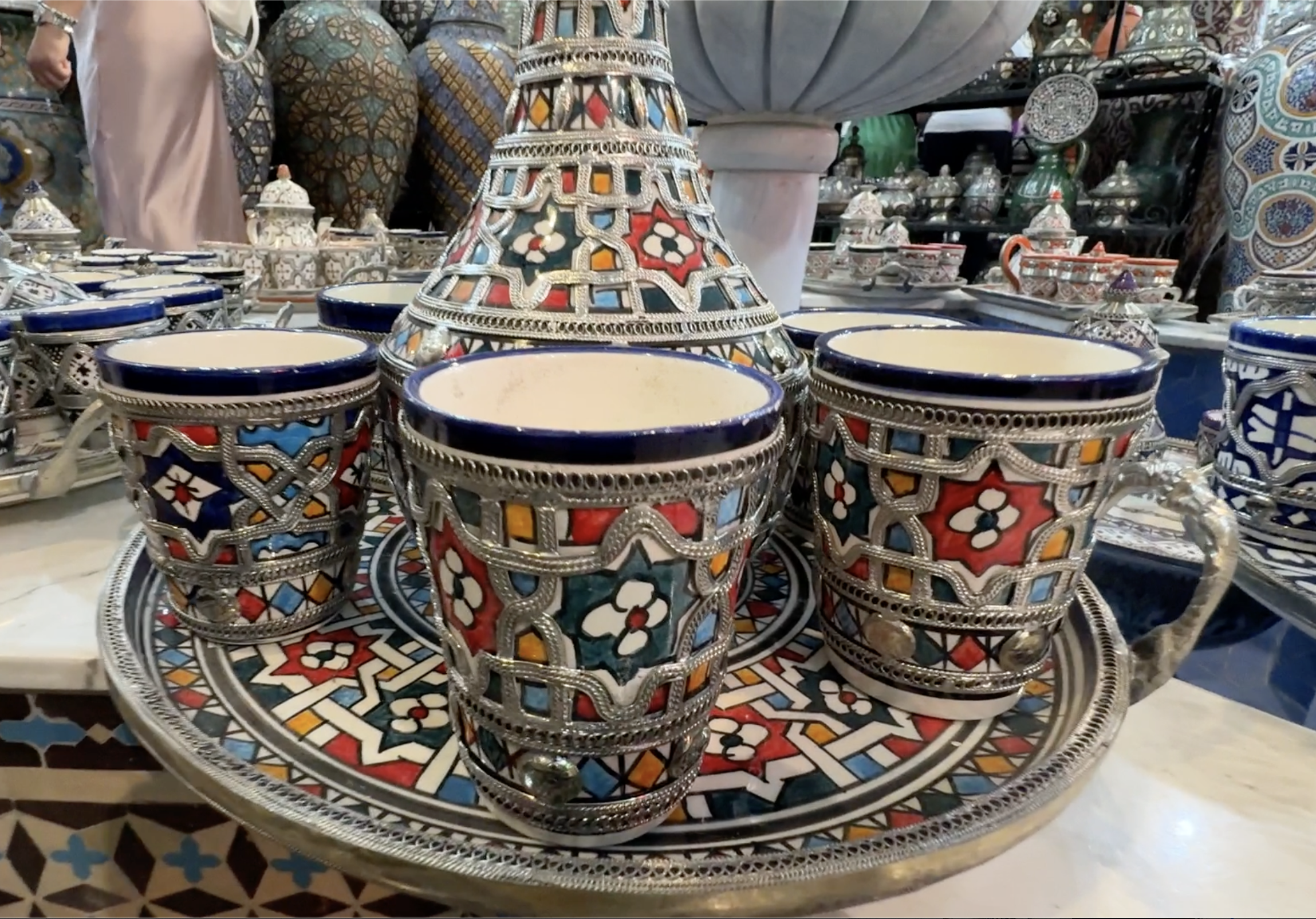
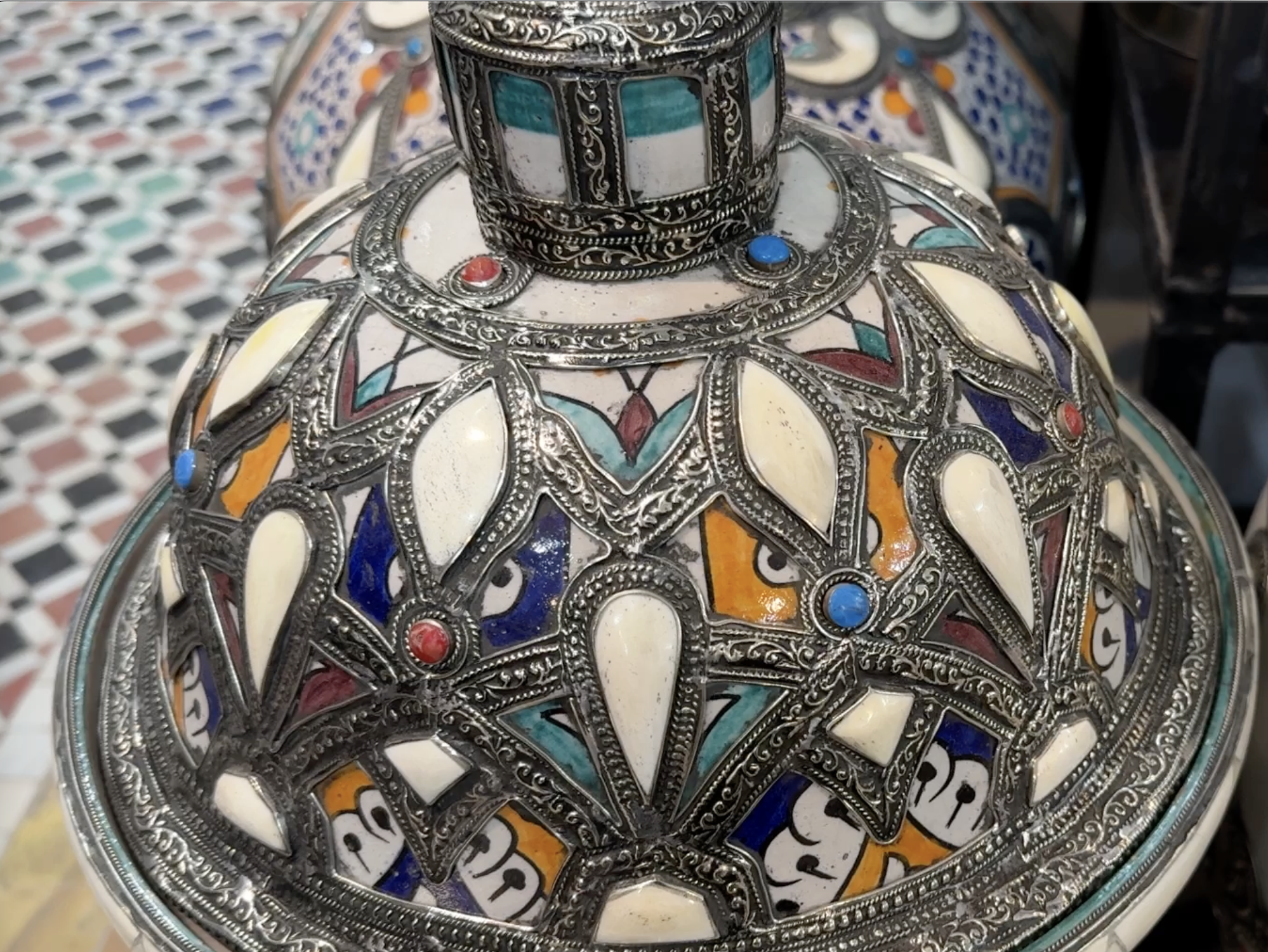
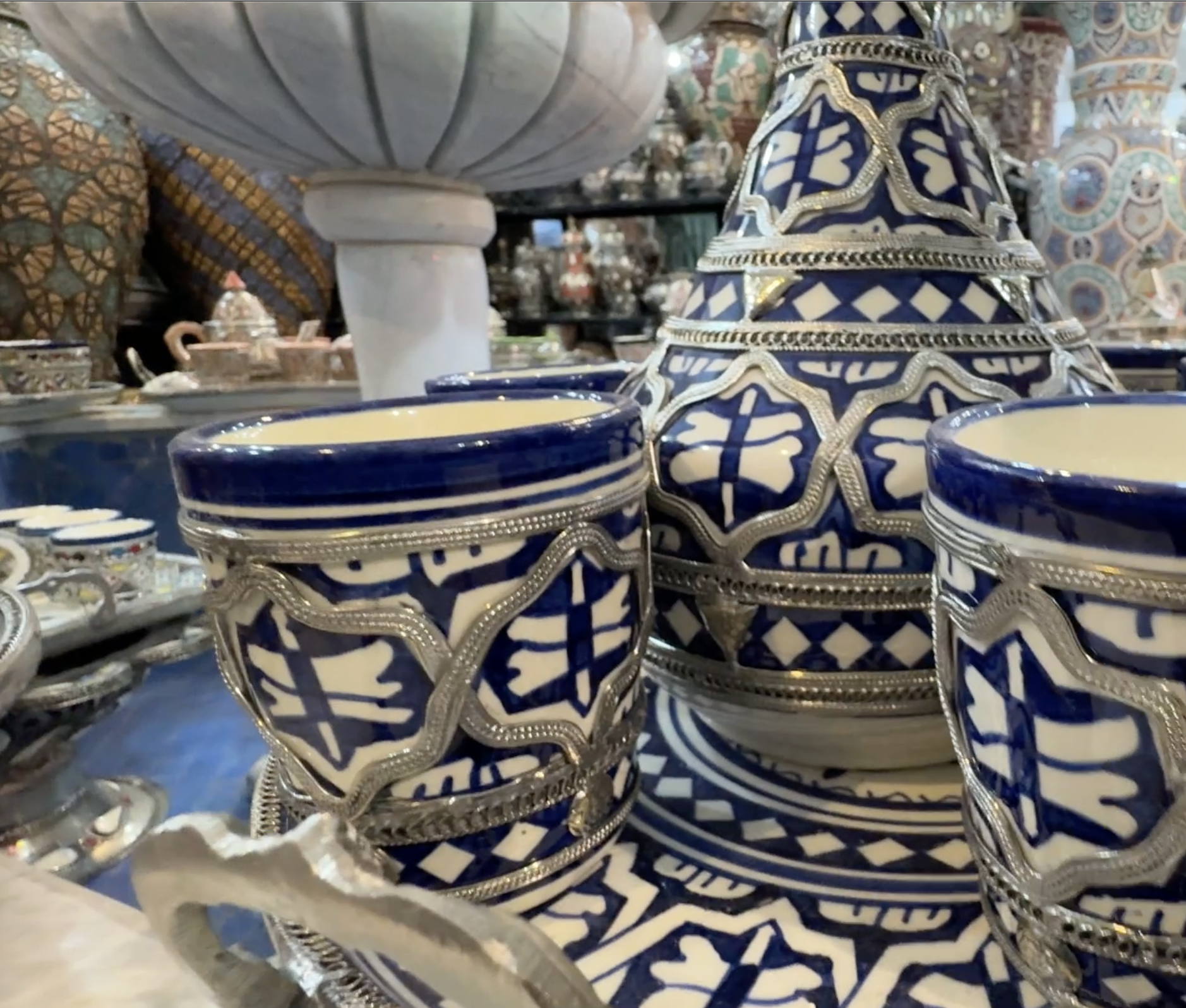
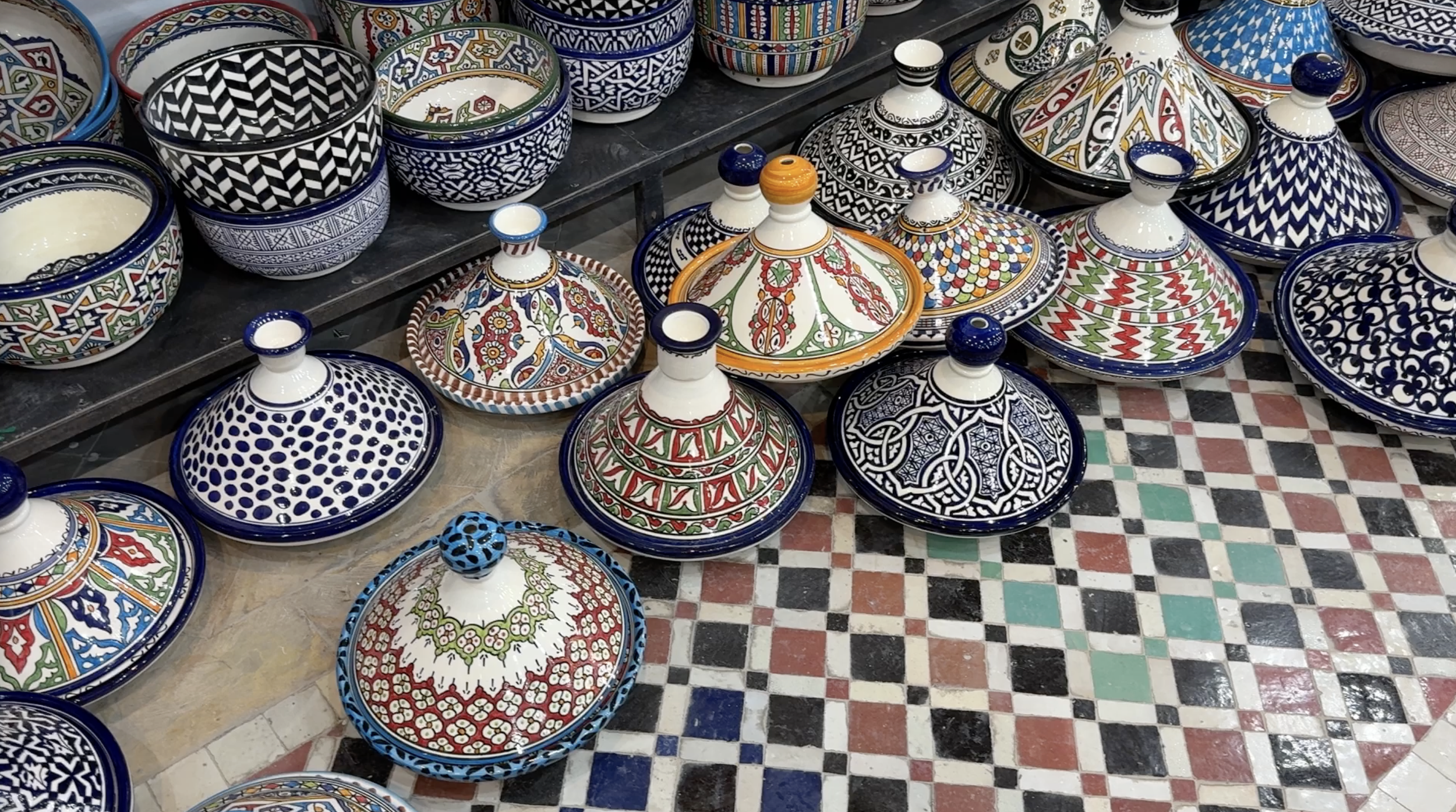
After the ceramics factory we visited the Bou Inania Madrasa. A madrasa is the Arabic word for school. Naturally the Koran is a major focus of study, but they also teach a wide range of subjects connected in one way or another to religion: calligraphy, astrology, algebra and law. Bou Inania Madrasa is considered to be the first multidisciplinary university in the world, and is today still a center of Islamic spirituality.
What I found most interesting here is how so many different materials were combined: hand painted tiles running quite high up the walls, inlaid marble on the floor, intricately carved stucco and wood. A peek just outside the upstairs windows reveals a sea of green roof tiles - the sacred color of Islam.












After two very long days, we eventually left Fez feeling utterly satiated by the mesmerizing cultural immersion. It was actually a welcome relief to be back in the car, quietly watching the landscape roll by and unwinding from the frenzied energy of it all.
A couple of hours later we arrived in Rabat, the capitol of Morocco. Rabat is located on the Atlantic Ocean at the mouth of the river Bou Regreg. The city was made the administrative capital after the French invaded and occupied Morocco in 1912. The Royal Palace of Rabat is the King of Morocco's official home, although the Royal Family usually live in a nearby private residence. The city is modern, clean and strewn with beautiful plantings and parks everywhere (I call it the ‘Green City’). It has a restful vibe - which was a welcome change after the intensity of Fez.
Next we visited the Mohammed V Mausoleum — a royal tomb on the Hassan Tower property. It contains the tombs of King Mohammed V and his sons, Prince Moulay Abdallah, and King Hassan II. The King is well known by the people for his refusal to enact Anti-Semitic laws, which protected 400,000 Jews living in the city.
Built in a classic Moroccan architectural style between 1961 and 1971 by over 400 Moroccan craftsmen, it is easily recognizable by its white walls and green-tiled roof. The interior walls are known for their Koranic calligraphy and traditional Zellij mosaics. The ceiling is carved in ornate motifs decorated with spectacular chandeliers that light up the red carpets and the red flags.












We had arrived at last at the Atlantic Ocean - how refreshing to be back at the sea! We drove south down the coast to our final stop in Casablanca, Morocco’s largest city with over 3.5 million people. The rapid growth of its port has established it as the economic capital of Morocco.




We soaked up the salty air and sea breezes before preparing for our transit back to Spain and
home to Meraki.







Note: photo captions will not appear if viewing on a cell phone.





